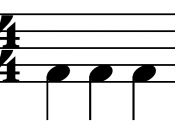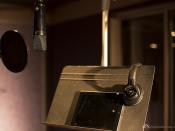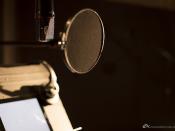Most good mixers these days can start there mix process at any desired point because of their years of experience and their relationship to their monitors. When starting out as a mixer you do not have this experience and need to start at a reference point that will produce desired results for your mix. I have designed this mixing segment for those with little experience or are new to the mixing process.
Before starting a mix you need to have a vision of how you want your mix to sound. Refer to Cds that examples of what you are trying to achieve, for creative and tactical purposes this will give you guidance on where you would like to take your mix sonically and musically.
NEAR FIELD MONITORS.
Good near field monitors play an essential in consistent reference. The monitors should be capable of reproducing frequencies from 60hz to 17Khz and be able to handle high SPL, and set up in a triangular fashion 3-4feet apart.
Make sure the monitors are not too close to the plane of the console so to minimize high frequency reflections that will corrupt proper imaging. If your using monitors that are not true in frequency response equalize the monitors in the monitor stage (post fade) to allow for discrepancies. This will alleviate you from incorrectly Eqing your mix to compensate for inaccurate monitors. Also the distance from your ears to the monitors should be set up so the room acoustics to not play a significant role in the sound of your mix. For example, the monitors are too far away and the room is reflective your mix will sound too dry.
OUTBOARD GEAR.
I like to start off my mixing sessions with at least three different reverbs, three ddl's a stereo chorus effect...


